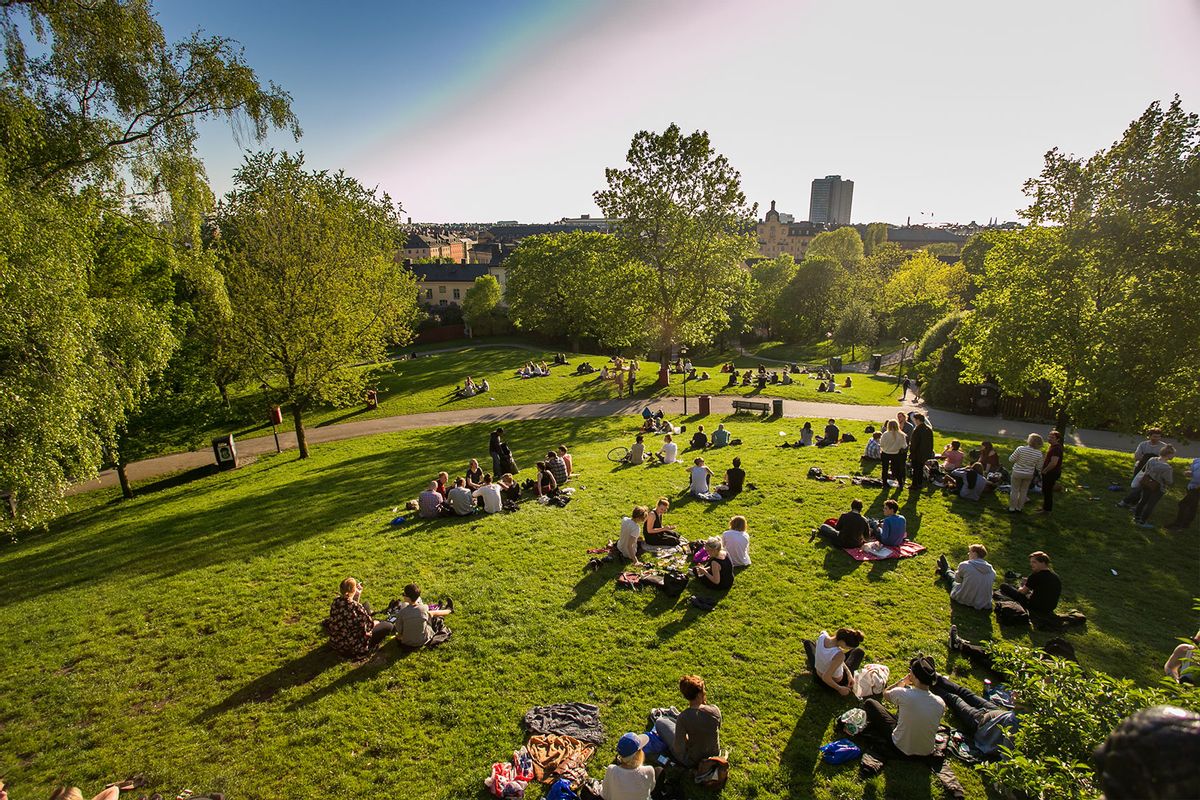For as long as I can remember, summer has always been my time to play outdoors. Unfortunately, extreme heat and wildfire smoke blanketing the East Coast has boxed my family indoors far too frequently in recent weeks. We have received several alerts about camp being held indoors due to poor air quality, and weekend hiking trips have been postponed on multiple occasions. Washington, D.C. is usually hot in the summer, but every year it gets hotter and hotter, and wildfire smoke is an entirely new thing for us.
The wildfire smoke coming from Canada, while an alarming sign of our changing climate, is atypical here in D.C., but for many families around the country, dangerous heat and air quality are an everyday reality. Many communities struggle with urban air pollution resulting from factories, energy plants and other polluting companies or industrial sites and freeways that encroach on their neighborhoods. Still others struggle with oppressive heat as a result of warming temperatures and a lack of tree canopy to provide shade and keep communities cool.
For many families around the country, dangerous heat and air quality are an everyday reality.
These communities, also referred to as fenceline communities, are more often than not Black, Indigenous or communities of color. A 2017 report from the NAACP and Clean Air Task Force cited that Black Americans are 75% more likely than the average American to live in a fenceline community. A Center for American Progress report based on 2017 census data found that 74% of nonwhite people live in a nature-deprived area, compared to the 23% of white people who live in nature-deprived areas. The American Lung Association 2023 State of the Air report found that people of color are 3.7 times more likely to live in a community with poor air quality.
Racist land use policies like sacrifice zones and redlining have brought us to this point, with such communities negatively affected by long-term health challenges such as asthma and lead poisoning, to which children are especially vulnerable.
The reality for many communities is that they have to live within walking distance from a smokestack when they should be living by a park or green space instead, leaving parents and individuals grappling with the choice of remaining indoors away from healing nature or breathing in heavy pollutants outside.
The reality for many communities is that they have to live within walking distance from a smokestack when they should be living by a park or green space instead.
The Biden Administration has taken positive steps to reduce air pollution, including their proposals to reduce soot and mercury, and to address carbon pollution from fossil fuel power plants, but there is so much more to be done to ensure children, families and communities can enjoy outdoor public spaces in a safe and healthy way.
We also need our leaders to support efforts to green our cities and create more urban nature pockets, which would increase the accessibility of green spaces for communities, providing respite from the heat, as well as address day-to-day air quality issues. Urban parks can do a lot to reduce air temperature, pollution, UV radiation and carbon dioxide at the local level. A research paper from the National Recreation and Park Association found that U.S. urban park trees remove 75,000 tons of pollution per year.
We need your help to stay independent
There are already communities and organizations working on this problem and they need support to continue their work from both the public as well as policymakers. The recently passed Inflation Reduction Act and Infrastructure Investment and Jobs Act provide an unprecedented opportunity to reverse the tide that is keeping our families inside. Funding from these landmark bills promises new opportunities for curbing our climate emissions and cleaning our air, while expanding tree canopy, green spaces and areas for outdoor recreation.
We all deserve to enjoy time outside on public lands without having to worry about whether we will be able to breathe, strong air quality standards and more tree canopy are tangible ways to turn that hope into a reality.



Shares